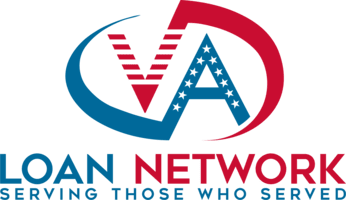In this Article
Understanding VA Loan Entitlement
If you’ve already used a VA loan before, you’re likely aware of the main advantages: often no down payment, no private mortgage insurance, and competitive interest rates.
These benefits stem from a concept called “VA entitlement.” In short, the U.S. Department of Veterans Affairs guarantees a portion of your loan, giving lenders enough confidence to extend better terms to qualified borrowers.
VA Entitlement essentially acts like a promise from the VA to cover a specific percentage of the loan if you ever default. When you first use a VA loan, part or all of your entitlement gets tied up in that property. If you want to use your VA benefits again, you’ll need to restore your entitlement so you can qualify for another VA loan without restrictions.
Basic vs. Bonus Entitlement
There are two primary types of entitlement: Basic and Bonus (often called second-tier entitlement). Basic entitlement typically covers loans up to $144,000 with a guarantee of up to $36,000. Bonus entitlement allows you to borrow beyond $144,000, often with no down payment, depending on county loan limits.
Here’s a quick reference table showing how these two tiers break down:
| Entitlement Type | Coverage Amount | VA Guarantee (25%) |
|---|---|---|
| Basic Entitlement | Up to $144,000 | Up to $36,000 |
| Bonus Entitlement | Above $144,000 | Based on County Loan Limits |
Understanding how entitlement works helps you see why restoration is such a critical step. If your old loan is still tying up your full entitlement, it’s unlikely you can enjoy zero-down financing or other hallmark advantages of a VA loan on your next purchase.
Why Restoration Matters
A common misconception is that you can only use a VA loan once. In reality, you can use it multiple times, provided you restore your entitlement each time you pay off your old VA loan. Restoration means you’re regaining the ability to borrow under VA terms for your next purchase or refinance.
If you don’t restore your entitlement, you might be forced to either make a larger down payment or refinance your VA loan into a conventional loan that could come with higher interest rates.
According to John Bell, Deputy Director of the VA Home Loan Program, “Full restoration of your VA loan entitlement can save you tens of thousands of dollars over the life of your next loan, especially if you’re eyeing a higher-priced home.”
Here’s why it’s crucial:
- Potential for Zero Down: When your entitlement is fully restored, you may have the option of paying nothing down on your new loan.
- Better Rates: VA loans often come with lower interest rates, saving you money every month.
- Flexible Requirements: You’ll typically find more forgiving credit and income guidelines compared to some conventional loans.
Different Ways to Restore VA Loan Entitlement
There are a few scenarios that allow you to restore your VA entitlement. Which path you choose depends on whether you’re selling, refinancing, or still holding onto your property.
Selling Your Current Property
If you sell the home tied to your original VA loan and pay off the mortgage in full, you can apply for entitlement restoration. It’s straightforward, since the old loan is fully settled.Refinancing to a Non-VA Loan
If you opt to refinance your existing VA loan into a conventional or FHA mortgage, you free up your VA entitlement because the VA is no longer backing that mortgage. This route can be appealing if you spot a favorable conventional rate or want to keep the property as a rental later.One-Time Restoration
The VA offers a unique one-time restoration option if you have fully paid off the old VA loan but still own the property. This scenario often occurs when you pay off your mortgage but don’t actually sell the home. You can restore entitlement once in this manner, allowing you to use the benefit again on a different property.Loan Assumption (Rare Cases)
In some situations, a buyer can assume your VA loan. If that buyer is an eligible veteran who substitutes their own entitlement, yours may be restored. While this process is uncommon, it’s useful to know it exists if you prefer transferring your property with minimal fuss.
“Veterans sometimes think they’re stuck with only one shot at a VA loan,” notes mortgage analyst Avery Thompson. “But the truth is, you can restore your entitlement repeatedly and enjoy VA perks for multiple home purchases over your lifetime.”
Step-by-Step Process to Restore Your Entitlement
If you’re ready to re-apply for another VA loan, here’s how you can go about getting your entitlement back:
Pay Off the Existing VA Loan
Whether through a sale or refinance, ensure the previous VA-backed mortgage is settled. Gather documentation from your lender confirming the loan is paid in full.Obtain a Certificate of Eligibility (COE)
This document proves you meet the VA’s service requirements. You can request it online via eBenefits, ask your lender to assist, or apply directly through the VA. If your service record is up-to-date, the COE process can be relatively quick.Submit VA Form 26-1880
A VA 26-1880 form is a formal request for the restoration of your entitlement. Fill it out carefully. Incomplete or inaccurate information may cause delays.Provide Supporting Documents
Attach any required paperwork, such as the closing statement from the sale or a statement from your new lender if you refinanced. Include documents that explicitly show your old VA loan is fully satisfied.Wait for VA Confirmation
After processing your request, the VA will let you know if your entitlement has been restored. Once restoration is complete, you can proceed with applying for a new VA loan without worrying about reduced entitlement.
Potential Pitfalls and Considerations
While restoring your VA loan entitlement can be straightforward, a few areas can complicate matters if you’re not prepared:
- Funding Fee
If you’re not exempt, expect to pay a funding fee on your subsequent use of a VA loan. This amount can vary based on your down payment and military category.
Below is a table outlining the most common funding fees for subsequent VA loans:
| Down Payment | Funding Fee (Subsequent Use) |
|---|---|
| 0% (None) | 3.6% |
| 5% or More | 1.65% |
| 10% or More | 1.4% |
These fees can change based on legislation and individual factors, like disability status. Always check the latest VA guidelines or consult a lender to confirm.
- Partial Entitlement
If you didn’t pay off the full mortgage or if you still own another property backed by a VA loan, you may have only partial entitlement left. That can limit your zero-down purchasing power on a second home. - Occupancy Requirements
VA loans are designed for primary residences. If your plan is to buy an investment property or vacation home, the VA rules might not align with what you want to do. - Credit and Income
Although the VA often has lenient guidelines compared to some conventional loans, lenders still evaluate your debt-to-income ratio and credit history before approval.
Frequently Asked Questions
How long does it take to restore VA loan entitlement?
Restoring your VA loan entitlement generally takes a few weeks to a couple of months. The timeline depends on how quickly you can provide documentation—like proof of a paid-off loan—and how promptly the VA processes your request. Submitting complete paperwork and following up with the VA or your lender often helps speed things along.
Can I restore my VA loan entitlement if I still own the home?
You can use the one-time restoration option if the loan is fully paid off. This allows you to keep your property and still gain back your entitlement. It’s only available once, so it’s wise to look at your future housing plans before opting for this route.
Is there a cap on how many times I can restore?
The VA generally allows unlimited restoration if you have sold or refinanced and fully paid off your previous loan each time. The one-time restoration option, however, can only be used once while retaining the property. Check your situation with a lender to confirm eligibility.
What if I used my VA loan years ago?
Time doesn’t restrict restoration. If you paid off your old VA loan decades ago, you could still be eligible to restore your entitlement as long as your service history meets the VA’s requirements. Request a fresh Certificate of Eligibility to confirm your current status.
Will my credit score matter when applying again?
Yes. Although the VA itself doesn’t impose a strict minimum credit score, individual lenders do. Expect a standard credit and income evaluation. Lender requirements vary, so it may be worthwhile to shop around for the most favorable terms.
How does partial entitlement affect a new loan?
If part of your entitlement remains tied to another VA-backed property, you could be required to make a down payment. The amount depends on how much entitlement is left and the size of the loan you want to take out. Discuss the specifics with your lender to avoid surprises.
Can someone else assume my VA loan and free my entitlement?
A buyer can assume your VA loan if the lender permits it and certain conditions are met. If that buyer is another eligible veteran substituting their own entitlement, yours can be restored. Assumptions are less common these days, but they remain an option for specific situations.
Does divorce affect VA entitlement restoration?
It can, depending on how the property and mortgage are handled. If your ex-spouse remains on the VA loan without substituting an entitlement, your entitlement could stay partially tied up. Refinancing or paying off the loan helps you restore it fully.
Levi Rodgers is a nationally recognized real estate expert and U.S. Army Green Beret (Ret.) who writes about homeownership, VA loans, and Veteran-focused real estate strategies. After his military service, Levi built one of the top-performing real estate teams in the country, helping thousands of military families navigate the path to homeownership. His writing draws from firsthand experience, leadership, and a deep commitment to serving those who serve. Levi simplifies complex housing topics and offers real-world guidance on credit, financing, and smart real estate moves — especially for Veterans and first-time buyers.


